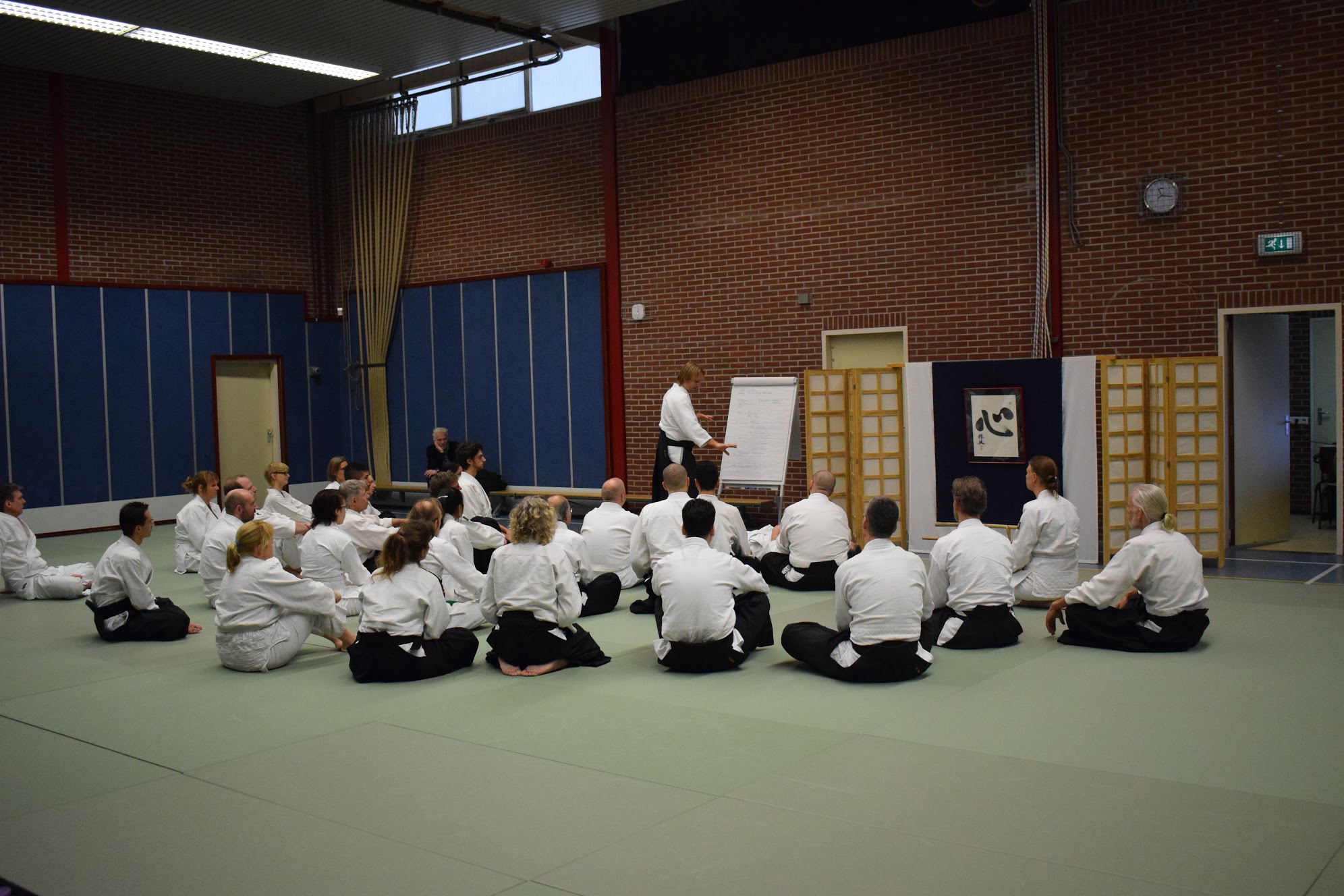4 Ki principes voor een correcte basishouding
1 . Keep your seika tanden ; Keep “One point”
Behoud de centrale as. Verbind je met het “Ene punt”, ga met je aandacht naar One point. Dit is je centrum (Tantien (China), Tanden (Japan)), het middelpunt van vitaliteit, kracht en gevoel van vrede. Bij ‘Kracht “wordt bedoeld, de kosmische kracht ; “Chi” in het Chinees, “Ki “in het Japans.
2. Relax completely.
Ontspan volledig. Laat onnodige spierspanning los. Daar waar je spanning ervaart. Los het op. Laat het skelet het lichaam dragen.
3. Keep weight underside.
Houd het gewicht aan de onderkant. Accepteer de natuurwet van de zwaartekracht. Alle objecten op aarde zijn onderworpen aan de wet van de zwaartekracht.
4. Extend Ki.
Laat Ki vanuit Tanden naar alle richtingen stromen, ervaar hoe dit van nature gebeurt.
5 (Ki Aikido) principes tijdens het het bewegen/handelen :
1 . Extend Ki
Laat Ki stromen.
2. Know your partner’s mind
Ken de intentie van je opponent/partner
3. Respect your partner’s Ki .
Respecteer de Ki van je partner.
4. Put yourself in the place of your partner.
Verplaats jezelf in de ander.
5. Perform with confidence.
Voer uit met vertrouwen.
Hieronder nog een goede beschrijving van basis Aikido principes:
1. Fudo Genri/ Immovable principles:
4 points towards Body, Mind and Spirit unity…
a. Concentrate on seika tanden/dantien or center.
b. Mind, heart and body must relax.
c. Feel the Ki in any movement and extend it
d. Mu Shin (no mind, or stop thinking too much)
2. Kihon Genri/ Basic Principles:
These are movement principles that follow the Aiki Law or Natural Universe Law.
a. Chushin: Center line. Always move from your own center line. Connect to uke and bring him into your center line. Do not move his center line separate from yours.
b.Shuchu: Focus power starting from the mind into the body.
c. Kokyu: Breath power, connecting the energy of the body and the physical aspects.
d. Enshin: Circular movement or more precisely, spiralling. You can spiral inwards or outwards.
3. Aiki Genri:
Energy principles, essential in resolving conflict.
a. Awase: Blending, to harmonise with incoming force not to avoid or fight it. Body leads the mind.
b. Musubi: Connection, stage two of harmonising. Musubi can occur in many levels not just at the physical level. Mind leads the body.
c. Nagare: Fluid movement, there is no stop in movement or conflict. Joining with partners energy and moving synergistic-ally.
d. Takemusu Aiki: Unlimited manifestation of Aiki. This is a stage when you are living in harmony with the universe. Technique is not essential because your opponent cannot defeat you since he will be fighting himself.
5 Stages of Understanding Aiki
1. Aiki no Kokoro: Understand and belief within your heart the principles of Aiki.
2. Aiki no Genri: Know and understand the Aiki Principles.
3. Aiki no Waza: Embody the techniques of Aiki in training and life.
4. Aiki no Chikara: Resulting from training and embodiment of Aiki principles, achieve the power of Aiki.
5. Aiki no Seishin: True Aiki. Its ‘switched on’ without your active participation.

